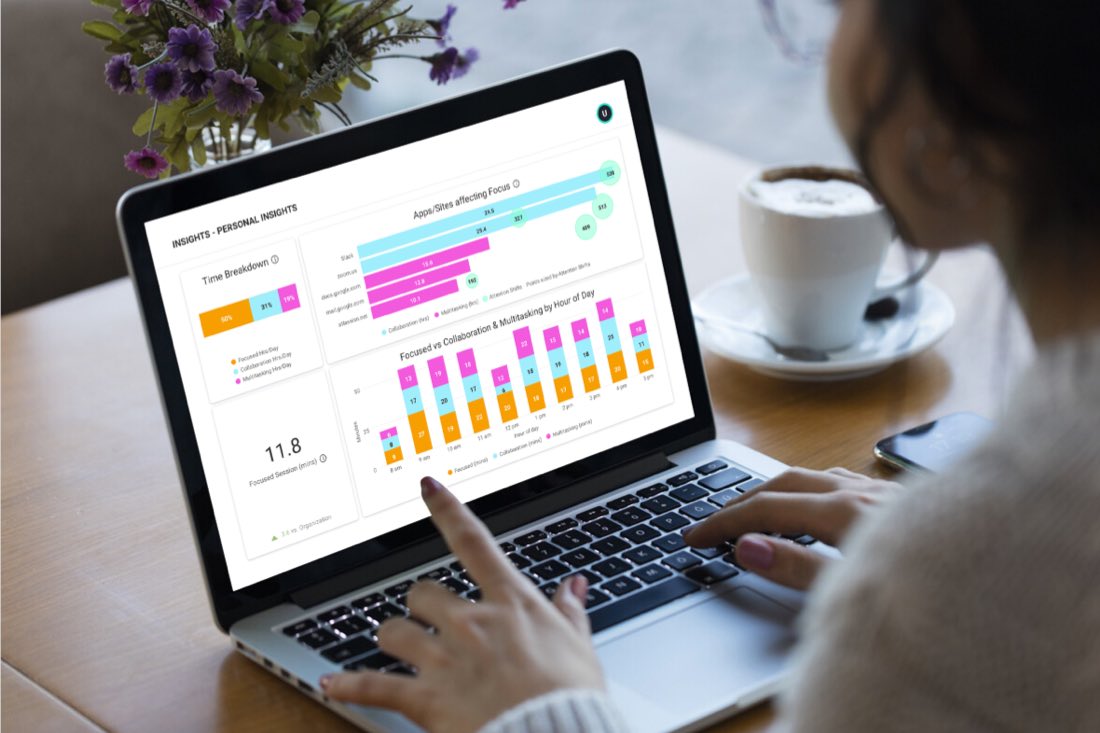Tracking productivity in the workplace sounds like a big task, but you need to do it to make sure your team performs at their peak. There are many benefits to monitoring productivity, like finding areas for improvement, increasing efficiency and enhancing team performance.
If you’re wondering how to track work productivity, check out our step-by-step guide below to start.
The importance of tracking work productivity
Before we dive into the guide, let’s take a second to understand why tracking work productivity is so important. Tracking productivity does so much more than just show what your teams are working on and how long employees spend working on tasks.
The best employee monitoring tools can give you real-time insight into how your business is doing. They also help you find a clear path to improvement, both in the short term and long term. Monitoring tools can help improve your team’s productivity by identifying areas where they may be struggling, whether it’s an inefficient workflow or problems with a tool.
Plus, they can show you and your employees how their work contributes to the overall success of the company. This allows your managers to reward top-performing employees for their hard work. At the same time, your managers can find opportunities for team members to grow and develop, based on where they stand out and what work they flourish doing.
Overall, tracking work productivity can lead to a more effective work environment and a better work-life balance for employees.
5 Steps to Track Work Productivity
Tracking work productivity can seem difficult, but we’ve outlined the essential steps below to help you get started.
1. Set clear goals and objectives
One of the most critical steps in tracking productivity is setting clear and achievable goals and objectives for your organization. You must first identify why and what you want to track before you can determine how to do it. This helps you make sure your team is fully aligned and working towards a common goal when it comes to employee monitoring.
Define SMART goals
When setting goals, it’s important to follow the SMART framework. This means making sure your goals are:
- Specific
- Measurable
- Achievable
- Relevant
- Time-bound
An example of a SMART goal might be to increase team output by 10% within the next quarter. You should identify your long-term goals as well as short-term goals.
Align team and individual objectives
At the same time, you need to make sure each team member’s individual goals align with the full team objectives. This way, you can make sure everyone understands how their work contributes to the larger picture.
2. Choose the right productivity tracking tools
Every organization will have different needs when it comes to productivity tracking. For instance, a customer service call center will probably want to track how long employees are on the phone with each customer alongside how often they’re able to fully solve a customer’s problem. A company that starts a new policy to work from home may want to track how much time employees spend finishing tasks compared to when they’re in the office. And an advertising agency may want to track how much time employees use to create ads on social media compared to how those ads perform.
Another issue to consider when choosing productivity tools is how invasive they may be – or how invasive they may feel to your employees. You need to be able to explain clearly to employees what the benefits of the tracking tools are not just to the organization, but for their sake. Otherwise, they may feel as if they’re being spied on or aren’t trusted, which can lead to employee morale issues. When looking at tools, here are a few types to consider:
Time tracking software
Time tracking software enables you to track the amount of time each team member spends on a task or project. This can be a valuable tool to help ensure projects progress as planned and that team members are focused and productive. These types of tools can help you understand how employees allocate their work hours and where they may need additional support.
Project management tools
Project management tools are vital to help teams manage projects and workflows in a central location. This can include tracking task assignments, deadlines and progress. By tracking all this information in one place, teams can stay more organized and focused. Using these tools as part of employee productivity monitoring can give your organization data on overall timelines and bottlenecks.
Communication and collaboration platforms
Communication and collaboration platforms help teams work together and communicate effectively. Chat platforms, video conferencing software and collaborative writing tools all fall into this category. Your organization can monitor these tools to understand what employees are working on and to help gauge employee sentiment, engagement and satisfaction.
3. Implement a productivity tracking system
Once you have your goals and objectives in place and have chosen what tools you want to use, it’s time to get started.
Establish a productivity baseline
Before you can track productivity, you need to establish a baseline. This means capturing data on your team’s productivity as it stands right now, including:
- Average amount of time to complete a task
- Number of tasks completed per day
- Number of errors per task
Setting the baseline helps you easily track improvement over time and make sure your goals are achievable.
Encourage employee participation
It’s important to encourage your employees to be accountable throughout the process. While it’s your job to outline the expectations around employee monitoring as clearly as you can, employees need to understand your expectations and how they’ll be held responsible for meeting them. Encouraging accountability can help improve overall productivity and ensure your team is on the same page.
4. Analyze and interpret productivity data
Once you’ve started to measure and track employee productivity, you need to analyze the data you get and use it to make informed decisions.
Identify patterns and trends
Look out for patterns and trends in your employee monitoring data, including:
- Which team members are most productive
- Which tasks take the longest to complete
- Which workflows appear to cause the most errors
Address productivity gaps
While the data can show where you have gaps in productivity, it’s up to your organization to find ways to fix them. You may need to provide additional training to team members, adjust workflows or add team members to tasks.
Celebrate successes and improvements
Don’t forget to celebrate your team’s successes and improvements. This can help boost morale and motivation while reinforcing the importance of the productivity tracking program.
5. Set up regular check-ins and reviews
Just because you have a productivity monitoring system in place doesn’t mean it’s going to remain static forever. Set up intentional checkpoints and reviews so you can assess what’s working in your monitoring system and what’s lacking. Make sure your goals are still aligned and the system is serving those goals and objectives. And finally, make sure your team members understand the importance of the system and buy into it so they can provide helpful and honest feedback.
Track work productivity with ActivTrak
Whether it’s to improve employee productivity or justify remote work for your employees, implementing the right productivity tracking system can help your organization grow and thrive. ActivTrak has a suite of tools to give you insight into how your employees perform best and the ways they can grow. Request a demo to learn how ActivTrak can help you track and improve productivity in your organization.





